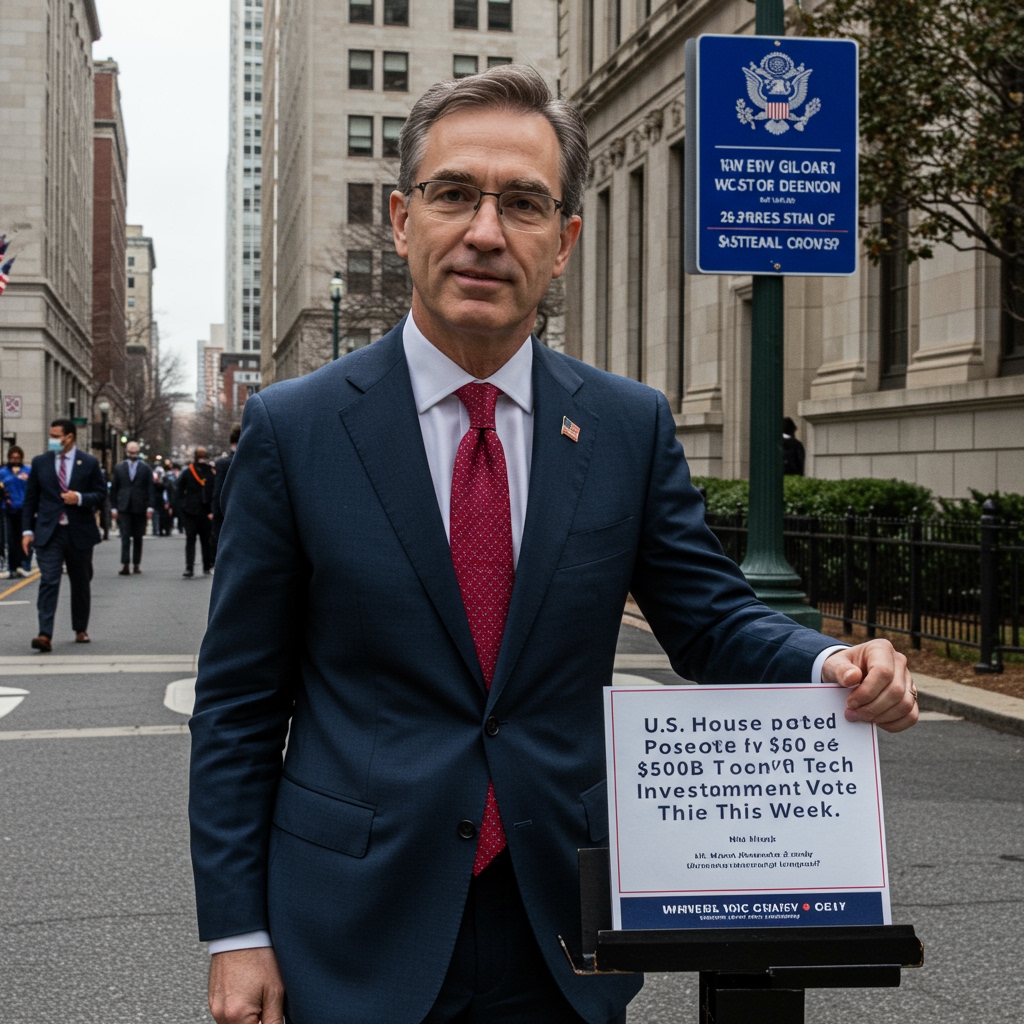House Gears Up for Critical Tech Bill Vote
Washington, D.C. – The United States House of Representatives stands at the precipice of a pivotal legislative moment this week, with a crucial vote anticipated on H.R. 7890, officially known as the “Advanced Technology and Infrastructure Act.” This comprehensive bill, if enacted, would earmark a substantial $500 billion in federal funding over the next five years towards catalyzing advancements in key strategic sectors of the American economy.
The proposed investment targets critical areas deemed essential for national security, economic growth, and global competitiveness in the 21st century. Primary focuses include bolstering domestic semiconductor production incentives, fostering cutting-edge Artificial Intelligence (AI) research, and significantly upgrading the nation’s renewable energy grid infrastructure.
Proponents Champion Competitiveness and Job Creation
Advocates for H.R. 7890 argue that the legislation is not merely an expenditure, but a necessary, forward-looking investment vital for securing the United States’ economic future and maintaining its technological leadership on the global stage. Among the bill’s most prominent supporters is Commerce Secretary Jane Doe, who has vocally championed its potential impact.
Secretary Doe and other proponents contend that robust federal backing is indispensable for enabling American industries to compete effectively, particularly against rapid technological advancements and state-backed initiatives in nations like China. They emphasize that the bill’s investments would stimulate innovation, onshore critical manufacturing capabilities, and ultimately create a significant number of high-skilled jobs across the country.
“This is about ensuring America leads, not follows,” Secretary Doe stated in a recent address. “Investing in semiconductors, AI, and a modern energy grid isn’t just about technology; it’s about our economic sovereignty, our national security, and creating the jobs of tomorrow right here at home.”
The legislation outlines specific mechanisms for distributing the funds, including grants, tax credits, and partnerships with private industry and academic institutions. Supporters point to supply chain vulnerabilities exposed during recent global events as a compelling reason to boost domestic chip manufacturing, while highlighting the transformative potential of AI research and the necessity of a resilient, clean energy infrastructure for future economic stability.
Opposition Cites Fiscal Concerns and Inflation Risks
Despite the broad strategic goals, H.R. 7890 faces significant headwinds and vocal opposition from various quarters. A notable segment of some Republicans in the House, alongside fiscal conservatives, have expressed deep reservations about the bill’s substantial price tag and potential economic consequences.
Their primary concerns revolve around the sheer scale of the half-trillion-dollar proposed expenditure. Opponents argue that such a massive injection of federal funds could exacerbate the national debt and potentially fuel inflationary effects, which are already a sensitive economic issue. Critics question whether government intervention on this scale is the most efficient or effective way to stimulate technological advancement, suggesting that the private sector is better equipped to drive innovation with less federal bureaucracy.
“While the goals sound noble, we must seriously consider the cost and its impact on hardworking American families,” commented one opposing legislator anonymously. “Throwing half a trillion dollars at these sectors risks increasing inflation andburdening future generations with debt, without a guaranteed return on investment.”
Furthermore, some opponents have raised questions about the specific allocation of funds, potential for wasteful spending, and whether the government should be picking specific technological winners and losers. Debates over the role of government versus market forces in driving innovation are central to their critique.
Intense Lobbying and Uncertain Outcome
The lead-up to this week’s vote has been marked by intense lobbying efforts from a wide array of stakeholders. Tech companies, labor unions, environmental groups, and industry associations have all mobilized to influence representatives, reflecting the bill’s broad potential impact.
Proponents are stressing the geopolitical imperative and the long-term economic benefits, while opponents are focusing on fiscal responsibility and potential negative economic side effects. The legislative calendar is tight, and the vote is expected by Friday, May 23rd, though the exact timing could shift depending on floor debate and procedural maneuvers.
The outcome of this critical vote remains highly uncertain. With a divided House and strong arguments being made on both sides, the path to passage is narrow. The results will not only determine the future of significant federal investment in key technologies but also serve as a barometer for the current political climate’s willingness to support large-scale government spending on strategic industrial policy.
As representatives prepare to cast their votes, the nation watches to see whether this landmark legislation will advance, reshaping America’s technological and economic landscape for years to come.





